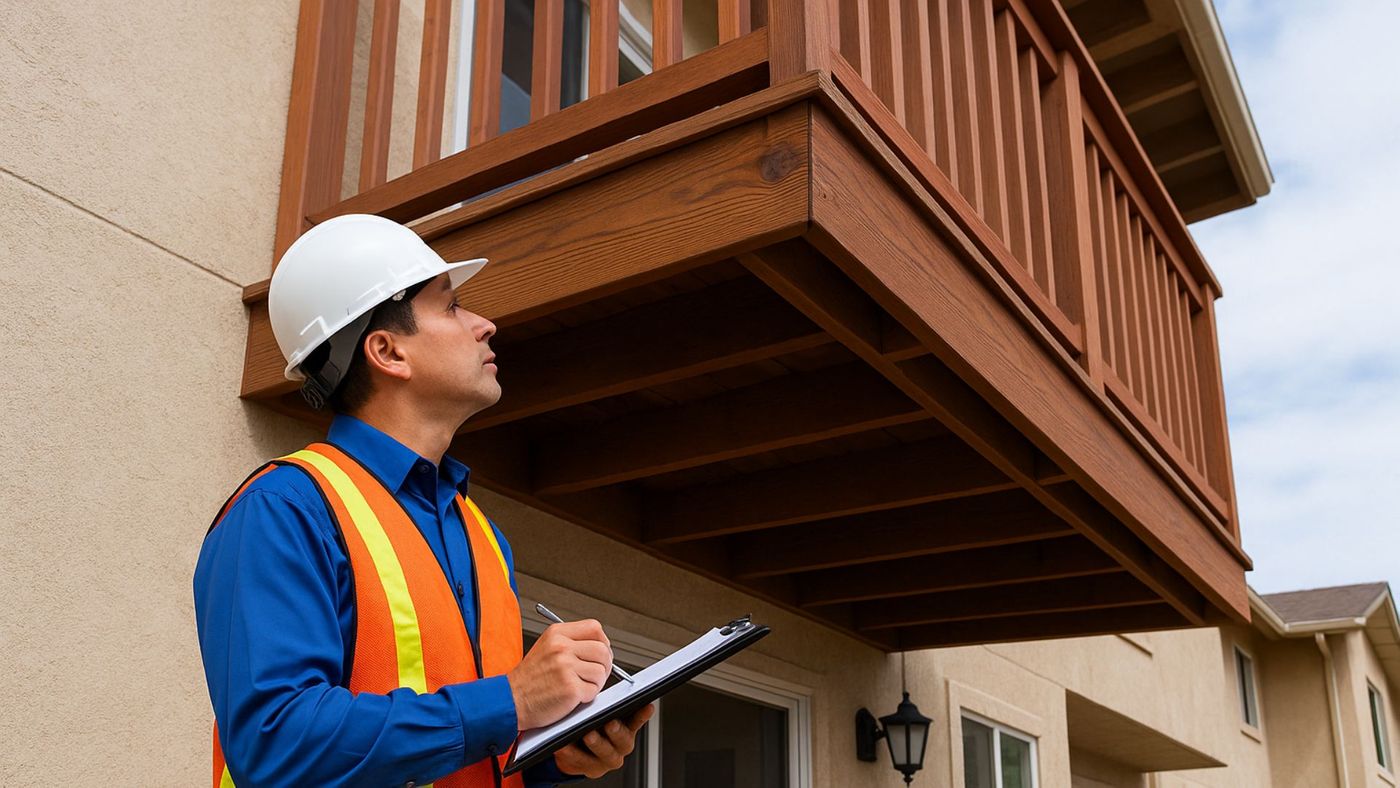Why SB326 Matters for Homeowners
Homeownership comes with countless responsibilities, but few are as critical as ensuring your property is structurally sound. In California, the SB326 Balcony Inspection Law makes this responsibility official. At the same time, something as simple as paint protection can help extend the lifespan of balconies and prevent costly repairs.
If you’re wondering how SB326 Balcony Inspection Law and Paint Protection are connected, this article explains everything you need to know—from inspection requirements to the role of paint in compliance and long-term maintenance.
Understanding SB326 (Balcony Inspection Law)
The Purpose of SB326
SB326, passed in 2018, was designed to prevent tragedies like balcony collapses. It applies to HOAs and condo associations in multi-family buildings with three or more units.
Key Requirements
-
Inspections must occur every 9 years.
-
Licensed structural engineers or architects must perform the inspection.
-
Reports must document balcony conditions and necessary repairs.
Who Must Comply?
HOAs are primarily responsible, but individual homeowners benefit directly from compliance because it keeps their property safe and maintains value.
The Link Between Structural Safety and Paint Protection
Balconies often fail due to moisture intrusion, wood rot, and steel corrosion. These hidden issues weaken structures from the inside out.
Here’s where paint protection plays a vital role:
-
Paint acts as a moisture barrier to keep wood dry.
-
Protective coatings shield metal from rust.
-
Sealants prevent cracks and leaks that inspectors often flag under SB326.
Without proper painting and sealing, balconies are far more likely to fail inspection.
Paint Protection as Preventative Maintenance
How Paint Extends Balcony Life
-
Keeps wood fibers intact by preventing water penetration.
-
Reduces the chance of mold growth.
-
Protects steel supports from oxidation.
Best Paints for Balcony Protection
-
Acrylic latex paint for wood.
-
Epoxy coatings for metal railings.
-
Elastomeric paint for concrete balconies.
Common Mistakes Homeowners Make
-
Using cheap paint that peels quickly.
-
Ignoring cracks and peeling areas.
-
Waiting more than 7 years to repaint.
How Paint Impacts SB326 Compliance
Inspectors look for:
-
Signs of water damage.
-
Condition of wood and metal supports.
-
Effectiveness of protective coatings.
If your balcony shows peeling paint, flaking sealants, or visible rot, you’re at greater risk of failing an inspection under SB326 Balcony Inspection Law and Paint Protection standards.
The Cost Factor: Prevention vs. Repairs
-
Neglect: Balcony repair costs can range from $10,000 to $50,000 per unit.
-
Prevention: A professional paint job may cost only a few thousand dollars and last 5–7 years.
In other words, investing in paint protection now can save tens of thousands later.
Choosing the Right Contractor and Paint
To stay compliant with SB326:
-
Hire licensed contractors familiar with balcony inspections.
-
Select paints designed for exterior durability (UV-resistant, waterproof, mold-proof).
-
Ask contractors about warranties on coatings.
Legal and Insurance Risks of Non-Compliance
-
HOAs can be sued for failing to schedule inspections.
-
Insurance may deny coverage if damage results from poor maintenance.
-
Home values drop when balconies show signs of neglect.
Future-Proofing Your Home
Advancements in paint technology—such as self-healing coatings and nanotechnology-based sealants—make it easier than ever to protect your balcony long-term. A proactive approach not only prevents inspection failures but also boosts curb appeal and resale value.
FAQs About SB326 and Paint Protection
Q1: Who pays for balcony inspections under SB326?
Typically, HOAs cover inspections, but costs may be passed down through HOA fees.
Q2: How often should I repaint my balcony for protection?
Every 5–7 years, depending on climate and paint type.
Q3: Does paint protection guarantee SB326 compliance?
Not by itself, but it significantly reduces the risk of damage inspectors look for.
Q4: What happens if my balcony fails inspection?
Repairs must be made immediately, often at the HOA’s expense.
Q5: Is balcony paint covered by HOA dues?
It depends—some HOAs cover it, while others leave it to individual homeowners.
Q6: How do I know which paint is best for compliance?
Choose paints with waterproofing and UV resistance, applied by licensed professionals.
Conclusion: The Smart Way to Stay Compliant
The SB326 Balcony Inspection Law and Paint Protection go hand-in-hand. While SB326 ensures safety through inspections, paint protection keeps your balcony strong, compliant, and beautiful.
👉 If you’re a homeowner or HOA member, make paint protection a priority—it’s one of the simplest, most affordable ways to avoid costly repairs, pass inspections, and preserve your property value.
For official details, review the law at California Legislative Info: SB326.

